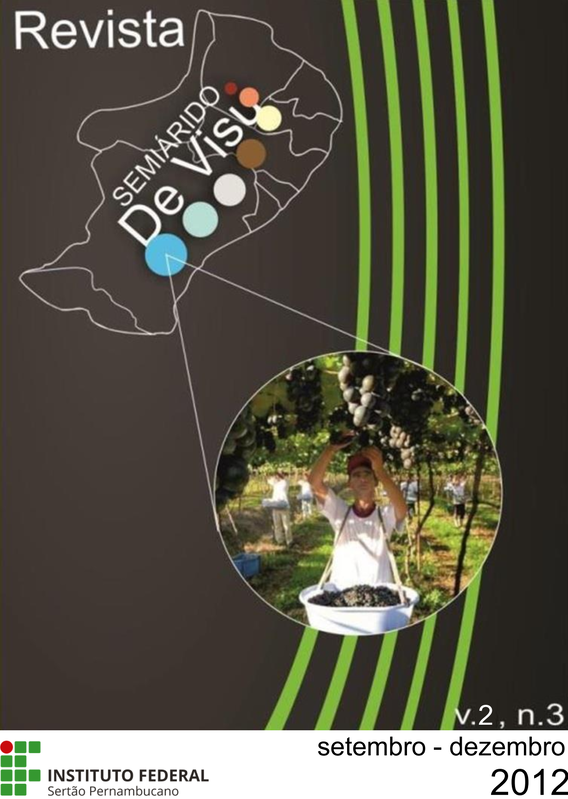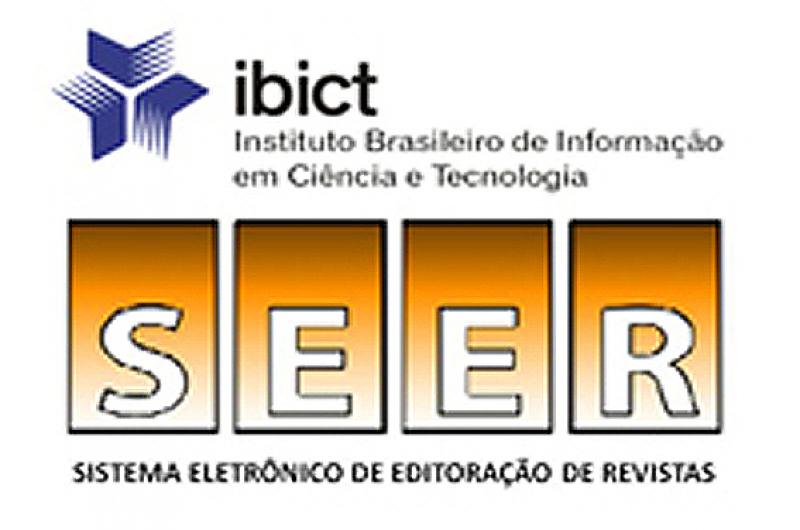Lyophilization: prospects for a new market in the region of the Vale do São Francisco
Visualizações: 171DOI:
https://doi.org/10.31416/rsdv.v2i3.181Keywords:
Dehydration, Agribusiness, FruitAbstract
Dehydration can be used to increase the time consumption of fruits, and also to expand its aggregate value. This procedure it's slowly coming to the knowledge of the farmers from Vale do São Francisco. With the progress of technologies, came the process of separation of fruit's water utilizing low temperature and vacuum, called lyophilization (Freeze-dried fruits).The region of Vale do São Francisco has its important characteristics by your huge production of fruits, still with a big loss of it's production during your processing and circulation. Trying to reduce the loss and increase the aggregate value, the lyophilization would be a good way to reach new horizons on the market. To evaluate the perspectives of a new market on the region, were made visits in three farms that are specialized on the production of grapes and passion fruits, were also made questionnaires and evaluated how does the internal and external market is characterized. As it relates to the commercial value, comparatives were made between freeze-dried fruit and those in natura. The results indicate that the lyophilized products (freeze-dried fruits) are promising for the Vale do São Francisco.
References
ANUÁRIO BRASILEIRO DE FRUTICULTURA 2008. Editora Gazeta, 2008. 136 p.
AMARAL, C. M.; DO CARMO, H. C. E.; MAURY, P. M.Estudos sobre o mercado de frutas. São Paulo: FIPE, 1999.
ALEXIS, J. W.; SUSAN, H.V.O.; JESSICA, R. S.; BRET R. P. The Effect of Loading Process on Product Collapse during Large-Scale Lyophilization. Merck & Co.,Inc, West Point, Pennsylvania 19486. 2008.
BRANDÃO, M. C. C.; MAIA, G. A.; LIMA, PARENTE,D. P.; E. J. de S.; CAMPELLO,C. C.; NASSU, R. T.;FEITOSA, T.;SOUSA, P. H. M.de.Análise Físico-Química, Microbiológica e Sensorial de Frutos de Manga Submetidos à Desidratação Osmótico-Solar. Rev. Bras. Frutic., Jaboticabal - SP, vol. 25, n. 1, p. 38-41. 2003.
CARVALHO, M. F. H. Gestão Federativa e Gestão Centralizada Para Cadeias de Suprimentos: uma Comparação. In Cadernos da FACECA, PUC-Campinas, pp. 81-91, vol. 12, no. 2., Jul/Dez. 2003.
CAVALCANTI, M. E. R. M.; DUARTE, M. E. M.; FIGUEIREDO, R. M. F. Obtenção de frutos em pó. Universidade Federal de Campina Grande, 2003. Projeto CNPq. 15p.
FETTEROLF, M. D. Lyophilization. Journal of Validation Technology.2010.
IBARZ, A.; BARBOSA-CANOVAS, G. V. Deshidratación y OperacionesUnitariasenlaIngeniería de Alimentos, Lancaster, Basel, 1999.
IEA – Instituto de Economia Agrícola. Destinos das Exportações dos Agronegócios Brasileiros de 2007. Análises e Indicadores do Agronegócio. v. 3, n. 3, março/2008.
INVAP, Disponível em: <http://www.invap.com.ar/en.html>. 2010. Acesso em 17 Abr. 2013.
MERCADO DO PRODUTOR, Disponível em: <http://www.juazeiro.ba.gov.br/?pag=mercado_produtor> Acesso em 17 Abr. 2013.
MELONI, Pedro Luis Santos. Desidratação de frutas e hortaliças / Pedro Luis Santos Meloni. – Fortaleza: Instituto Frutal, 2003. 87p.
MINISTÉRIO DA FAZENDA, Disponível em:<http://www.fazenda.gov.br/resenhaeletronica/MostraMateria.asp?cod=785337> Acesso em 22 Abr. 2013.
MORAIS, M.A.C. Métodos para avaliação sensorial dos alimentos. Campinas, Unicamp, 93p. 1993.
PENSA - CENTRO DE CONHECIMENTO EM AGRONEGÓCIO. Cadeia produtiva de frutas secas/desidratadas: oportunidade de investimento em frutas desidratadas e uva passa nos Vales do São Francisco e do Paraíba. CODEVASF. Brasília. 2008.
SEAGRI – Secretaria daAgricultura, Pecuária, Irrigação, Reforma Agrária, Pesca e Aquicultura, Vale do São Francisco começa a industrializar suas frutas. Disponível em: <http://www.seagri.ba.gov.br/noticias.asp?qact=view¬id=14650>. 2008. Acesso em 17 Abr. 2013.
SEBRAE. Disponível em: <http://www.sebrae.com.br/>. 2013. Acesso em 15 Abr. 2013.
SECEX - SECRETARIA DE COMÉRCIO EXTERIOR. Disponível em: <http://www2.desenvolvimento.gov.br/sitio/secex/>. Acesso em 19 Fev. 2013.
SOARES, E. C.; OLIVEIRA, G. S. F.; MAIA, G. A.; MONTEIRO, J. C. S.; SILVA JUNIOR, A.; FILHO, M. S. S. Desidratação da polpa de acerola
(Malpighiaaemarginata D. C.) pelo Processo de “Foam-mat”. Ciência e Tecnologia de Alimentos, Campinas, maio/agosto 2001.
SOUSA, P.C.B. Frutas Desidratadas. Disponível em: <http://m.sebrae-sc.com.br/SebraeSiteWap/ideiasdenegocio.id.logic?id=2CD97761A709A623832579990061C785>.2008.Acesso em 15 Mar. 2013.
VALEXPORT: EXPORTAÇÕES. Disponível em: <http://www.brazilianfruit.org.br/>. 2006. Acesso em 19 Fev. 2013.















